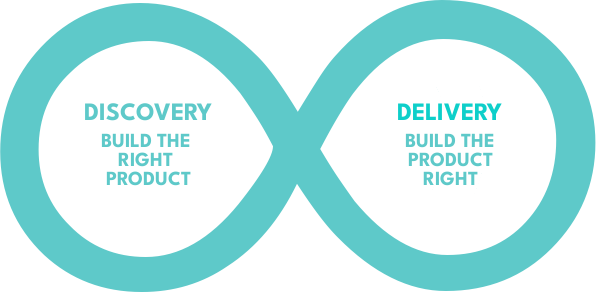What is The Infinite Loop (L∞P)?
We are going to mention the term "The Infinite Loop" hundreds of times through this guide. In order to make our life easier we will use the short "L∞P".
The Infinite Loop (L∞P) is an Agile software development methodology inspired by the open-source community and designed to help technology businesses create a culture of trust, ownership, and data-driven continuous experimentation that fosters sustainable product-led growth and high-performance digital product teams.
The Infinite Loop doesn't try to reinvent the wheel; for the most part, it simply takes elements from other methodologies and software development principles.
The Infinite Loop proposes the creation of product-led teams that use a pull-based system and two backlogs with a focus on different but equally important objectives:

Discovery: Contains tasks that aim to understand the business goals and user needs and design solutions to address their critical challenges before committing resources to development. However, this doesn't mean that development is not involved Discovery. Developers should be engaged in direct conversations with the customer. Also, sometimes the only way to remove unknowns, especially technical unknowns, is to build a prototype that might require development resources. The goal is to ensure that we will build the right product by eliminating unknowns. When the product team gains enough confidence to commit, they work together to finalise a specification that can be included in the Delivery backlog.
Delivery: Once users have validated our solution ideas, developers can implement the application. The development team is not pressured to hit an arbitrary deadline or an inaccurate estimate. At this point, our developers are perfectly aware of what they need to get done, they are motivated to deliver value to our customers, and we trust them and empower them to reach the right compromise between providing value and managing technical debt. The developers only need to be left alone, so they can get work done. They have a high level of ownership and are responsible for implementing, releasing and operating the code changes. They constantly search for ways to leverage automation to optimise their feedback loops and improve efficiency. The goal is to build the product right.